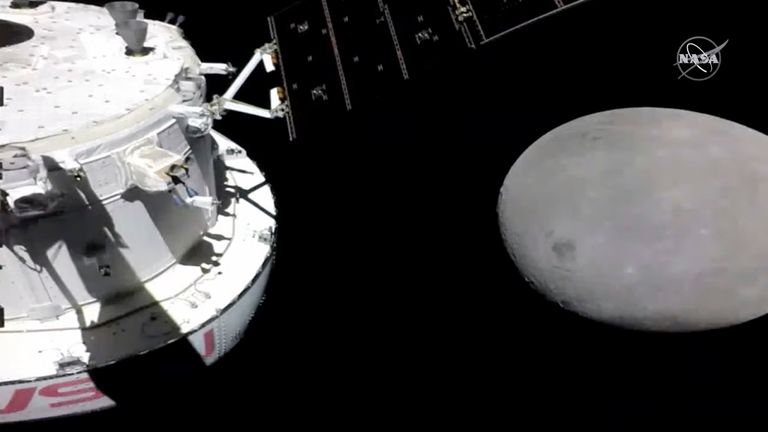NASA’s Orion spacecraft successfully crashed into the Pacific Ocean after orbiting the moon for 25 days.
Shortly after 5.40pm UK time, the unmanned capsule – designed to carry astronauts on future trips – touched down near the island of Guadalupe in south-east Cuba.
The spacecraft headed toward Earth at 25,000 mph, slowed to about 325 mph after entering the atmosphere, and then deployed 11 parachutes and dropped to less than 20 mph.
As part of the Artemis-1 mission, the successor to the Apollo program, it launched from Earth on November 16 aboard NASA’s Space Launch System (SLS) rocket, ushering in a new era of lunar exploration, with humans Maybe it’s possible to return to the moon.
nine days later it made history 270,000 miles across the globe – has flown the farthest of any spacecraft designed to carry humans.
It has now added over 1.4 million miles.
Sunday marks 50 years since astronauts last walked on the moon. After landing on December 11, 1972, Apollo 17’s Eugene Cernan and Harrison Schmitt spent three days exploring the Taurus-Littrow Valley.
Orion is the first capsule to visit the Moon since then.
Sean the Sheep’s Space Journey
There may be no humans on this mission, but returning from the long trip are furry astronauts Snoopy and Shaun the sheep, along with three astronaut mannequins — dubbed Commander Monikin Campos, Hull Plus and Zohar, they are equipped with vibration sensors and radiation displays.
The recovery team will pull the capsule from the ocean.
NASA Administrator Bill Nelson said he was “overwhelmed”, adding: “This is an extraordinary day. It is historic because we will now return to space with a new generation – deep space.” .”
read more:
A $93 billion space mission
Why We Haven’t Encountered Intelligent Life Yet—According to NASA
‘Planet killer’ asteroid found hiding in bright light
While the Artemis-1 mission has always been about testing systems, the Artemis II flight test scheduled for 2024 will be NASA’s first crewed mission to orbit the moon.
If successful, Artemis II will pave the way for the first woman and next man to land on the moon, as part of Artemis III, possibly as early as 2025.
The Artemis mission is part of NASA’s long-term plan to build a space station called the Lunar Gateway Astronauts will be able to live and work.

